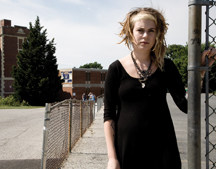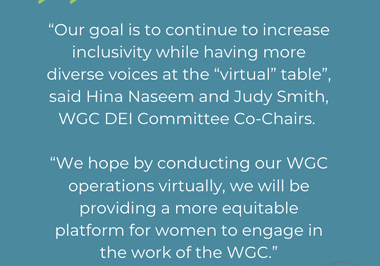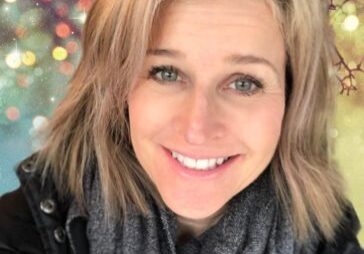HOWARD COUNTY SCHOOLS AND INDIVIDUALS CONFRONT THE BULLIES
STORY BY Judy Oppenheimer PHOTOGRAPH BY Meredith Tankersley
Sam Rubin, a 17-year-old Howard County senior at Atholton High, used to try to ignore it when his friends used certain words and phrases in their conversation – typical teen put-downs of the kind heard daily in every high school in the land. It bothered him, but he did his best to shrug it off.
No more. These days, he says, he tries to “monitor what I say and what my friends say.” Watching out for hurtful words and behaviors has become a cause to him now, he says.
“When one of my friends says, ‘Oh, you’re so gay, you’re such a faggot,’ I’m like – let me explain to you why that makes no sense, and how terrible the things you’re saying are,” he said. “It’s a simple tool, but effective.”
And the reaction? “It varies,” Rubin admits. “Some kids are like– why did you tell me that?” Others, though, are willing to listen.
A leader in both local and regional B’nai B’rith youth groups, Sam helped organize a conference in Boston last fall entitled “One for All: A Jewish Teen Issue Summit on Equality.” One of the items on the agenda was bullying, and the discussions, he says, made him far more sensitive to the subject. Coming home, he helped arrange free showings of the movie “Bully,” a recently released documentary about bullying in U.S. schools that tells the harrowing tales of five young victims, two of them suicides.
Rubin also began to wear a wristband made by the North Carolina B’nai B’rith group, imprinted with the phrase “I don’t say that.” When people ask him what’s on his wrist, Rubin will explain, “this is my youth group trying to eliminate the use of derogatory words.” It’s a way of starting a discussion on the subject, he says.
Sam is just one of the many Howard County residents – teens, parents and teachers – who have recently become far more aware of the harm name-calling can do – and of its connection to the much larger subject of bullying.
A tragic event in the spring brought the problem of bullying home to Howard County. Grace McComas, a winsome, blonde 15-year-old sophomore at Glenelg High School, committed suicide on Easter Sunday, a victim, according to her parents, of several months of cyberbullying.
Grace’s suicide was not the first in the county to be attributed to bullying. In October 2011, a 14-year-old boy at Reservoir High School hung himself. According to sources he, too, had been a victim. But Grace’s death received heightened attention after the McComas family released a heartbreaking video on her life  that was viewed by thousands; friends organized a memorial where mourners wore blue, her favorite color; county schools arranged forums and seminars on bullying. In May, Ravens running back Ray Rice headed up a countywide anti-bullying event, where Grace’s father, Dave McComas, fighting tears, read aloud some of the disturbing messages his daughter had received. “i hatehatehatehatehatehatehate you. Next time my name rolls off your tongue, choke on it.. and DIE” was one.
that was viewed by thousands; friends organized a memorial where mourners wore blue, her favorite color; county schools arranged forums and seminars on bullying. In May, Ravens running back Ray Rice headed up a countywide anti-bullying event, where Grace’s father, Dave McComas, fighting tears, read aloud some of the disturbing messages his daughter had received. “i hatehatehatehatehatehatehate you. Next time my name rolls off your tongue, choke on it.. and DIE” was one.
“She was an extremely tenderhearted girl,” Christine McComas, her mother, said in a newspaper report. “Words can hurt, and it needs to be said.”
Bullying, and in particular cyberbullying, had already been the focus of both state and local attention, even before these recent tragedies. According to statistics, 300 incidents of bullying were reported in Howard County public schools last year. And this year – two days after Grace McComas died – the Maryland General Assembly passed a bill broadening the current law against harassment to include social media, e-mail and text messaging
A policy against cyberbullying, as well as general harassment and intimidation was put into place by the Howard school district in 2009. But in the wake of the recent sad events, many parents felt stronger measures were called for. Several schools, including Glenelg, held mental health weeks, during which bullying was discussed. In late April, a cyberbully expert, Sameer Hinduja, director of Florida Atlantic University’s Cyberbullying Research Center, met with county counselors, psychologists and staff. He also held an anti-bullying seminar for parents and other concerned community members.
Hinduja was adamant on one point: “Cyberbullying does not cause suicide,” he said. “There are always other problems.” But adolescence itself, one of life’s most difficult passages, can be a minefield, he said, and cyberbullying can be the final blow, enough to push a child over the edge.
Hinduja offered a number of tips for parents struggling to stay on top of their children’s online life – among them the creation of contracts between parent and child to limit time on the Internet, use of spyware and the like. But in the end, his advice was simple: “Keep the lines of communication open. Talk to your teen.”
Dr. Catherine P. Bradshaw, deputy director of the Johns Hopkins Center for the Prevention of Youth Violence, who says bullying has long been one of her subspecialities, agrees.
“You need to have the bullying talk with your child,” she says. Just as parents have been urged over the years to have the sex talk and the drug talk with their kids, they now need to add one more, she says. And as with the first two, she points out, the earlier the better.
“Having important conversations is a good preventive step,” Dr. Bradshaw says. “Parents who talk to children can be instrumental in preventing bullying and buffering its consequences.”
Though it has been around since humans walked the earth, bullying has taken on new forms of late with the introduction of technology. Cyberbullying is often anonymous and carried on far from adult supervision, in a social media world populated only by teens. This new world offers a new challenge to parents and teens, says Eric Sheninger, principal of New Milford High School in Bergen County, N.J. And Sheninger believes there is only one good way to fight it: Parents and teachers need to join that world.
“Most parents and schools don’t have a clue,” about the online environs inhabited by their children, says Sheninger, who regularly lectures to school officials across the country and considers himself a kind of evangelist. At one time he, too, thought social media had no place in schools. “I was wrong,” he says.
Gradually Sheninger came to believe that schools were failing students by ignoring this important part of their lives. So he set out to learn about it. Today he’s known as the “Twitter principal” thanks to his constant online presence. “We need to educate kids about the ramifications of online behavior – for college, for jobs,” he says. In addition, teaching students how to be “digitally responsible” is a way of preparing them to be good citizens.
As for cyberbullying, Sheninger says that he and his students “discuss it, stress it – and show how painful it can be.” Students at his school visit elementary schools to talk about bullying with younger kids. The conversation, Sheninger stresses, “needs to start young.” He points to the success of his campaign: “We haven’t had an instance of cyberbullying in a long time. The kids are aware, they report it to us.”
Bullying often seems to peak around middle school, a prime time for stormy adolescent behavior. Victims are often targeted because race, religion, sexual orientation, looks, a disability – even intelligence – make them stand out, or appear “different” in some way.
“I was bullied severely as a child,” recalls a 55-year-old Howard County woman who prefers to remain anonymous. “I’m black and I spoke well and was smart,” which in an all-black school can be enough to make you a target, she recalls. Plus “I had crooked teeth, glasses and funny hair – all the markers.” After several years, she begged her parents to let her change schools; they did. But the scars remain.
“I know I will always be damaged,” she says. “One of the things that happens when you’re bullied is you spend most of your life figuring out how to stand up for yourself … or you do it inappropriately. In my public life I’m strong, solid. But in private life I need help.”
The deeper you examine bullying, the more the stereotypes seem to fall away, and the more complicated the issue becomes. Not everyone fits the formula, experts say. Targets are not always outsiders. The bully is not always the big guy with a chip on his shoulder, eager to punch out someone weaker. In fact, especially with younger teens, bullies may be the popular kids, trying to solidify their base as leaders.
Then, too – a further complication — victims can turn into bullies themselves on a dime. Many bullies may be reacting to having been targets.
“We need to be careful not to demonize the kids” who are bulliers, Hinduja pointed out at his forum. The father of a young Midwest girl who recently killed herself after being bullied said his family would not bring charges against the teens responsible.
“They’re kids. They made some horrible decisions,” the father, Rick Ehmke, told Minnesota Public Radio. “If these kids had known this would happen I’m pretty sure they never, ever would have done what they did.”
In the past year, the problem of bullying has become something of a national obsession, fueled in part by the release of the film “Bully.” A Washington Post story revealed Republican presidential candidate Mitt Romney had been the the ringleader in a nasty incident in high school, when he and a group of friends ganged up on a schoolmate and forcibly cut his hair. According to the report the boy, who came out as gay years later, was deeply scarred. Romney claimed he did not remember the incident.
President Obama also had an experience with bullying during childhood. Janny Scott’s recent biography of his mother, “A Singular Woman,” tells how Obama was targeted while living in Indonesia by boys yelling racial epithets. A friend of his mother’s wanted to intervene, but his mother deterred him. “He’s okay, he’s used to it,” she said.
Keeping your cool is considered a positive attribute in Javanese culture, Scott noted in the book.
Sam Rubin, continuing his one-man fight, recently performed a slam-poem he wrote for an anti-bullying video done at his school. His message:
“If I want to be a man or a women what right do you have to judge
Cause I’m sorry high school but I am a little above that
That’s a fact
And so if I enjoy some girly things
And that makes me a fag
Well you did not get to know my character and that’s just pretty damn bad
Cause I look deeper and I wish that you did too
I am Sam proud white straight and a Jew
Get to know me for me and I promise I’ll get to know you for you.” *




